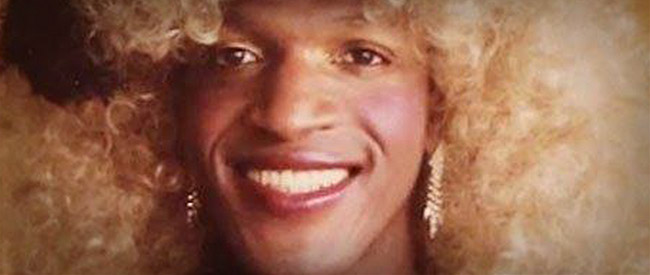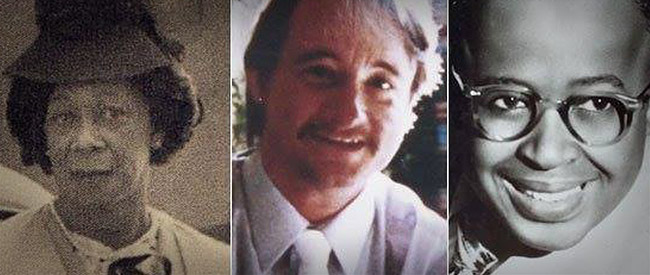How We Got Here: An Interview with the Creators of the Trans Web Doc Series ‘We’ve Been Around’
In a year marked by extensive and often dispiriting political tumult, one notable bright spot in the culture has been the evolving understanding and acceptance of the transgender experience, from high-profile coming out stories to the increased volume and sophistication of trans media representation. But the fact remains: the history of trans people in America (and elsewhere) is still sadly under documented.
Enter the documentary web series We’ve Been Around, which seeks to edify viewers about trans history with its stylistically distinctive brand of highly snackable five-minute episodes. The show combining archival material with animation, literary narration and mixed media collage to tell trans stories ranging from the Civil War to the AIDS epidemic of late ‘80s San Francisco.

The first five episodes of We’ve Been Around were directed by filmmaker and 2012 Project Involve Fellow Rhys Ernst and produced by 2016 Project Involve Fellow Giulia Caruso of Nonetheless Productions in partnership with Focus Features in association with 11B Productions. The sixth episode of the series, “Camp Trans”, was directed by Elliot Montague and also tapped the talents of writer and director Rosie Haber—yet another Project Involve veteran.
Earlier this year Film Independent spoke to Ernst to discuss his involvement with the Lili Elbe Fellowship, as well as his experiences creating the justly praised title sequence for Amazon’s hit series Transparent (Ernst is also a producer on the show.) You can read that interview here.
We caught up with Ernst, Haber and Caruso to talk about We’ve Been Around and its importance, both as a corrective to the lack of programming devoted to trans history and as a critical part of the digital content ecosystem. We’ve Been Around is currently making the Festival rounds, and is mounting a campaign for 2016 Emmy consideration. Here’s the conversation:

So if you can boil it down, what is the goal of We’ve Been Around?
Ernst: As a transgender person, its been incredibly exciting and stunning to see how quickly things have changed in terms of trans media representation and the trans civil rights movement over the past couple of years. But one thing that was really missing from the conversation was how we got here. Within the LGBT community there’s very little awareness of trans history. I didn’t know much about trans history, and if you ask the average person—even a trans person—if they know much about the history of the trans movement, there’s not a lot of awareness out there. So it was really my own impulse for research and desire for history that led me to this project. We found so many different types of stories, so many eras and types of people. It was this crazy multi-colored rainbow of stories.
How did you isolate these particular six stories to focus on?
Ernst: There were a lot of stories we almost did, or could have done, or were interested in. One of the criteria for me was to make sure the storytelling was as diverse as possible across race and region and gender and type of person and story. So there’s a pretty even spread from the Civil War to the early ‘90s. That was important. And within that, finding stories that we could distill down to a five-minute short wasn’t exactly easy, but we were lucky to find such rich, incredible source material that there’s quite a lot more out there we could have done.
Haber: Especially with [the Camp Trans episode] we had a really tight deadline. I was brought on last minute on “Camp Trans” as a writer and a producer. I had been commissioned to write a screenplay of the iconic transgender novel Stone Butch Blues, written by Leslie Feinberg [one of the episode’s subjects –ed.]. So Giulia gave me a call one day and said hey, we’re doing Camp Trans and we want it to be about Leslie. Are you interested? And that’s sort of how I got looped into it. Rhys and Giulia already had an infrastructure; it was such a great challenge to take on, and I loved the collaborative aspect.
That episode could really be its own feature-length documentary.
Ernst: It’s a really fascinating story. I think it was the hardest of all the six films to distill down and simplify the arc and be able to tell it in five minutes. We had to omit quite a lot. We actually had some, I should say, feelings about how we knew we couldn’t tell the whole story. We knew we could only do so much in five minutes.
Giulia, how did you and Nonetheless get involved?
Caruso: Rhys stared the process with Focus Features. He was asked by Focus to start this series, and at some point they were looking for a production company to come on. Once I found out that Rhys was directing I was like yeah, we definitely want to do this. So at the beginning we were involved basically as the production company for the [first] five episodes, and once we finished those five episodes we loved the series so much and we were so proud of it, we wanted to figure out what was next. Then this idea of the Emmy campaign came around, but [the Emmys] had just introduced a new rule that you had to do six episodes to do a [web series] campaign. That’s really when we all really became much more close and involved in the creative process.
One of the things I enjoyed so much about the series was that the episodes all feel of a piece, but each has its own unique flavor. How did you approach the visual style of the series?
Ernst: Making documentaries is not my primary focus—at all. My background is much more in experimental, mixed-media art filmmaking and narrative. Now, I sort of keep a foot in a couple different camps between the art world and working in TV on Transparent. So when this project came up I knew that [the episodes] could essentially be documentary films, but I didn’t necessarily want to treat them like documentary films. I wanted to treat them more like mixed-media art film portraits. I really wanted to make it feel alive. I wanted it to feel kind of like a comic book brought to life, so that’s kind of the look and feel. I imagined them as little candies that were all the same shape, but different flavors.
What do you think the future is for content like this on the internet, or on YouTube?
Haber: I [find] this great joy in making stuff that can be on the internet, because there’s that dialogue and people can watch it and share it. I think what’s difficult is people don’t really know which platforms to go to [to] find really good content. So that’s one of the challenges of the digital world, having places with curated quality content that’s really good. I think that’s something that’s evolving.
Caruso: In a way, the fact that We’ve Been Around can exist on YouTube is kind of actually the whole point of making it, the fact that the series can be on YouTube for free and accessible to everyone. It maximizes the potential of what the series can do in the broader scope of things. You have a little bubble and then it grows to a much bigger scale, where many more people will be exposed to it.
Last question: is there going to be a We’ve Been Around Season Two?
Caruso: We would love that. As Rhys said, there are so many stories we could tell and I think it seems like people do want more. For us it’s just a matter of figuring out what that looks like. The truth is that these episodes are short, but there’s a lot of very hard work that goes into it, so it needs to be sustainable. We’re looking at making more, even if it’s not exactly the same version, continuing to tell these stories.
For more information about We’ve Been Around, including links to watch all six episodes, please visit the show’s website and Facebook page. To learn more about Project Involve and additional Film Independent Artist Development programs, click here.
To learn more about Film Independent, subscribe to our YouTube channel. You can catch up with the rest of our blog here. And to become a Member of Film Independent, just click here.